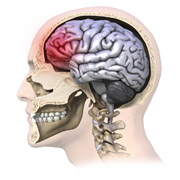Research and Innovation, UNL Office of

Center for Brain, Biology, and Behavior: Faculty Publications
Document Type
Book Chapter
Date of this Version
2024
Citation
Chapter 2 (pages 11–33) in P. G. Bray and A. Maerlander, editors. 2024. Adolescent Public Mental Health. Springer Nature. doi: 10.1007/978-3-031-68294-0_2
Abstract
Conclusion
Parents do not suddenly relinquish medical decision-making to their children and are a vital part of a process construed within the framework of consent and confidentiality laws. In the transition period from childhood to adulthood, adolescents develop unique healthcare needs and concerns at the very time they are gaining autonomy from their parents. Adolescents progress from being recipients of decisions about their care to gradually becoming active participants in their healthcare and emerge as a primary partner in medical decision-making. Building a strong therapeutic alliance with young people can help them become responsible healthcare decision-makers.
Yet while “healthcare,” including mental healthcare, is justifiably viewed as an individual healthcare event, it is part of broader societal need. One’s own mental health concerns do not exist in a vacuum. The threats to well-being extend outward to the family, the community, and the wider world. Behavioral, emotional, and cognitive responses are embedded in a culture. And naming the illness does not address the causes. Addressing epidemics requires a longer-range view that rests on prevention and the promotion of healthy, positive behaviors. “Take one and call me in the morning” will not solve any epidemic, including a mental healthcare one.
Given the importance of adolescence as a critical developmental stage with near-term significance for the population’s benefit, the current trends of mental health and well-being demonstrate a picture that has been recognized as troubling. It is true that some indicators have shown improvement over the past few decades such as improvements in treatment for severe behavioral disturbance and substance abuse prevalence.
In spite of these challenges, young people are demonstrating creativity, resilience, and com-mitment when addressing pressing societal issues such as violence, climate change, and inequal-ity. Youth-led social activism related to the environmental movement, such as gun safety and social justice, is a bright spot of purposeful action (Sunrise Movement, n.d.; TEAM ENOUGH, n.d.; Students for Educational Justice, n.d.). And it would be irresponsible to lay blame at the feet of adolescents for the current state of adolescent mental health, who still reside in both develop-mental and biological phases needing support and leadership. Both professionals and youth have sounded an alarm that much more needs to be done to prepare the next generation of adults who will inherit a troubled planet, including doing more to address their mental health concerns.
Included in
Analytical, Diagnostic and Therapeutic Techniques and Equipment Commons, Behavior and Behavior Mechanisms Commons, Nervous System Commons, Neuroscience and Neurobiology Commons


Comments
Copyright 2024, Springer Nature. Used by permission